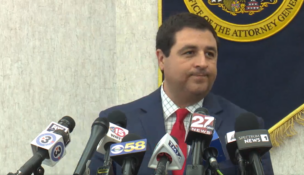Blood Draw Case Analysis
By: dmc-admin//October 8, 2003//
Two aspects of the case are particularly noteworthy. First, the court’s reasoning creates the anomalous result that, in most cases, if a drunken driving suspect is given a breath test and tests over the legal limit, he cannot be subjected to a blood test, while a driver who tests under the legal limit may be so subjected.
In the former case, this decision will presumably control, and the blood test will be inadmissible.
In the latter case, however, a blood test will almost invariably be justified on the grounds that the officer has an exigent circumstance in testing for controlled substances that are not revealed by a breath test.
In such a case, the officer obviously believes the driver to be intoxicated, for whatever combination of reasons, or he would not have arrested him. If the driver takes a breath test and the test suggests that he is not intoxicated by alcohol, it is logical to conclude that the driver is addled by some other substance, and exigent circumstances justify a blood test.
Second, the court’s analytical framework is deficient in relying solely on the statement in Krajewski that the exigency exists only until “a satisfactory, useable chemical test has been taken,” and failing to independently determine whether the result is correct under the standard set forth in both Krajewski and State v. Bohling.
That standard is, “[A] warrantless blood sample taken at the direction of a law enforcement officer is permissible under the following circumstances: (1) the blood draw is taken to obtain evidence of intoxication from a person lawfully arrested for a drunk-driving related violation or crime, (2) there is a clear indication that the blood draw will produce evidence of intoxication, (3) the method used to take the blood sample is a reasonable one and performed in a reasonable manner, and (4) the arrestee presents no reasonable objection to the blood draw.” State v. Bohling, 173 Wis.2d 529, 533-34, 494 N.W.2d 399 (1993); State v. Krajewski, 2002 WI 97, 255 Wis.2d 98, 116-17, 648 N.W.2d 385.
The first three criteria are met in this case, and, as Justice Bradley noted in dissent in Krajewski, will invariably be met. Krajewski, 2002 WI 97, pars. 76-78.
| |
||
| |
||
Should this case receive further review in the Supreme Court, which is not bound by what may be a sole stray statement, the question will not be whether that isolated statement in Krajewski requires suppression of the evidence, but whether the prior existence of results from a breath test is a reasonable basis to object to a subsequent blood draw.
All Fourth Amendment questions are to be determined on a case-by-case basis, and blanket exceptions to the Fourth Amendment are impermissible. Richards v. Wisconsin, 520 U.S. 385, 391, 395 (1997). Thus, the Supreme Court cannot simply hold that blood draws are per se constitutional, even if police already have a presumptively valid breath test. The ultimately inquiry is the reasonableness of the driver’s objection.
Thus, parties facing similar facts should go further than the court did in this case; they should explicitly argue and get a decision on the relevant inquiry — whether the arrestee’s objection was reasonable under the unique circumstances of the case.
If they do that, they will reduce the likelihood, should this decision be reversed, that their cases will result in remand back to the circuit court. Instead, they can get a decision based on the record already created at that level the first time around.
– David Ziemer
Click here for Main Story.
David Ziemer can be reached by email.
Legal News
- Attorney General Kaul releases update at three-year anniversary of clergy and faith leader abuse initiative
- State Bar leaders remain deeply divided over special purpose trust
- Former Wisconsin college chancellor fired over porn career is fighting to keep his faculty post
- Pecker says he pledged to be Trump campaign’s ‘eyes and ears’ during 2016 race
- A conservative quest to limit diversity programs gains momentum in states
- Wisconsin prison inmate pleads not guilty to killing cellmate
- Waukesha man sentenced to 30 years for Sex Trafficking
- 12-year-old shot in Milwaukee Wednesday with ‘serious injuries’
- Milwaukee man convicted of laundering proceeds of business email compromise fraud schemes
- Giuliani, Meadows among 18 indicted in Arizona fake electors case
- Some State Bar diversity participants walk away from program
- Wisconsin court issues arrest warrant ‘in error’ for Minocqua Brewing owner
WLJ People
- Power 30 Personal Injury Attorneys – Russell Nicolet
- Power 30 Personal Injury Attorneys – Benjamin Nicolet
- Power 30 Personal Injury Attorneys – Dustin T. Woehl
- Power 30 Personal Injury Attorneys – Katherine Metzger
- Power 30 Personal Injury Attorneys – Joseph Ryan
- Power 30 Personal Injury Attorneys – James M. Ryan
- Power 30 Personal Injury Attorneys – Dana Wachs
- Power 30 Personal Injury Attorneys – Mark L. Thomsen
- Power 30 Personal Injury Attorneys – Matthew Lein
- Power 30 Personal Injury Attorneys – Jeffrey A. Pitman
- Power 30 Personal Injury Attorneys – William Pemberton
- Power 30 Personal Injury Attorneys – Howard S. Sicula











